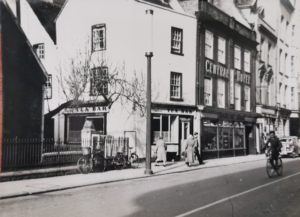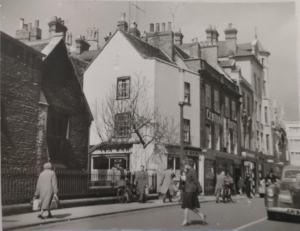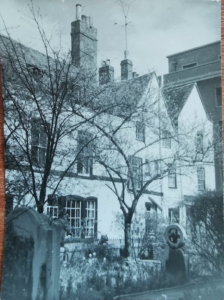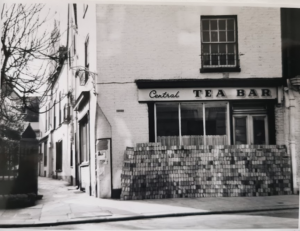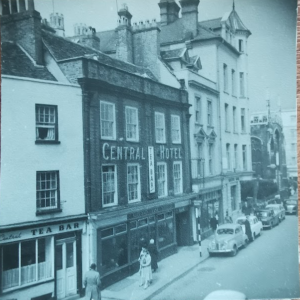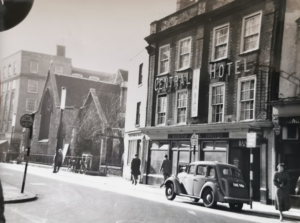Search by topic
- archaeology
- Building of Local Interest
- charity
- church
- crime
- dressmaker
- fire
- Great Eastern Railway
- Listed building
- Mapping Relief
- medieval
- oral history
- poverty
- Public House
- Rattee & Kett
- Religious House
- Roman
- scholar
- school
- Then and Now
- tudor
- women
- work
- world war one
- world war two
Search by text
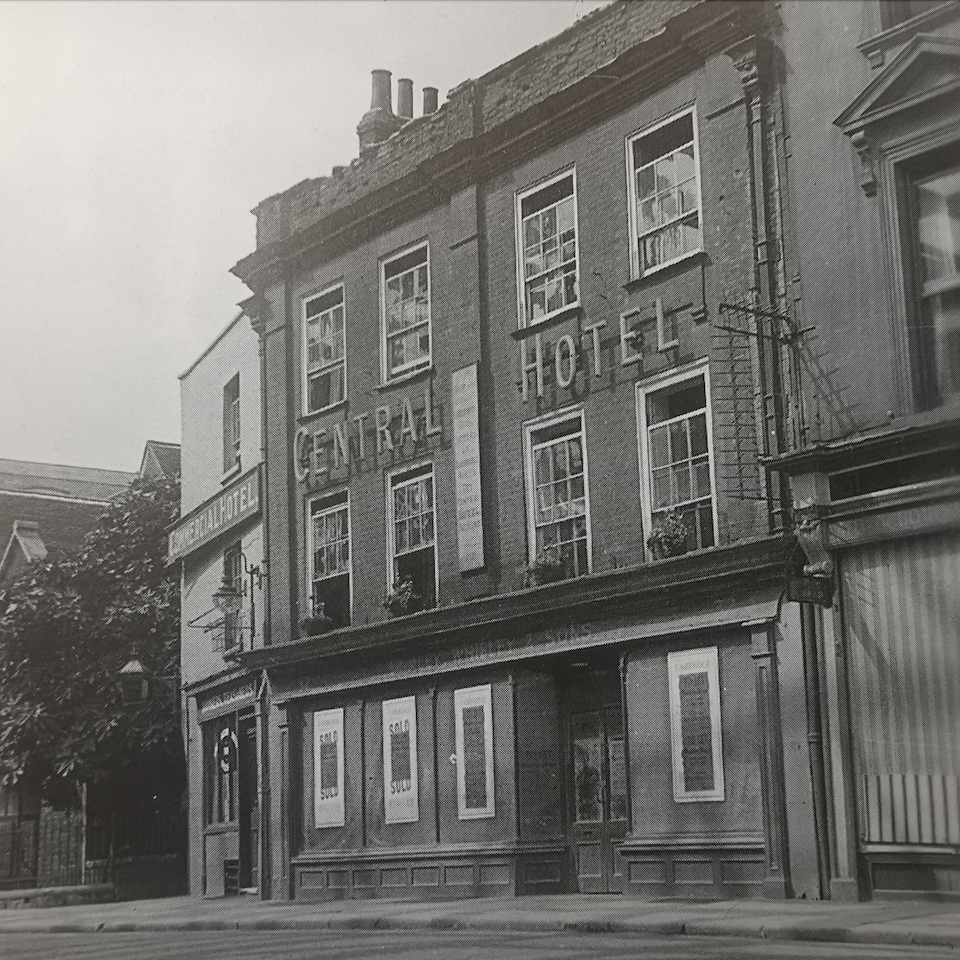 Central Hotel, 1936 (photo M Murray) demolished 1960(Cambridgeshire Collection)
Central Hotel, 1936 (photo M Murray) demolished 1960(Cambridgeshire Collection)Central Hotel, Three Tuns Inn, St Edward’s Passage
History of Centra; Hotel, St Edward's Passage
According to 1959 Royal Commission on Historical Monuments Survey of Cambridge, Central Hotel, at the N. corner of St Edward’s Passage, consists of a complex of four or five small houses. Some or all of these were combined at the Restoration to form an inn, the ‘Three Tuns’ which was closed down in 1790. It is possible the location where Pepys ‘drank pretty hard’ on 25th February 1660.
There is a NE range of mid 17th cent. original’s and distinguished by a brick front facing Peas Hill, a SE corner block rebuilt in the 19th cent., a central rather later 17th cent. block running N and S and containing the former assembly-room on the first floor, and a SW wing bordering St Edward’s Passage. The wing improbably the oldest surviving part and dates from the 16th cent.
The brick front dates from 1727 and within there are interesting mid and later 17th cent. panelling and timber fireplace-surrounds.

Back of Three Tuns Inn, Peas Hill at corner of St Edward’s Passage. Later known as Central Cafe. Demolished in 1950s. (MoC51.60)
In 1961 the site was rebuilt as the Midland Bank.
Contribute
Do you have any information about the people or places in this article? If so, then please let us know using the Contact page or by emailing capturingcambridge@
License
This work is licensed under CC BY-NC-SA 4.0





